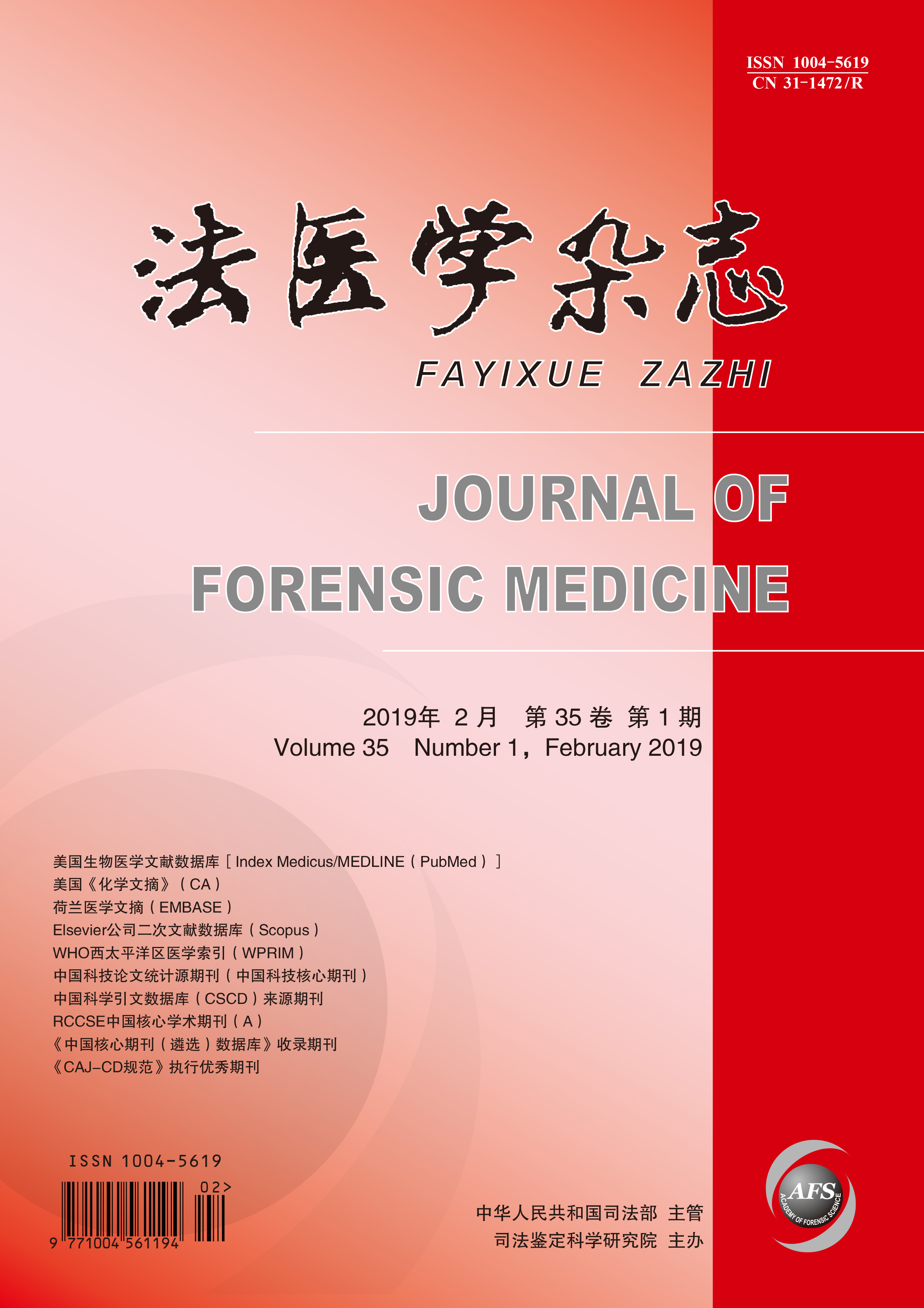|
|
Analysis of Forensic Sciences Literature in SCIE from 2008 to 2017
SHI Ge-fei,HUANG Ping,LIU Ning-guo, et al.
2019, 35(1):
30-38.
DOI: 10.12116/j.issn.1004-5619.2019.01.006
Objective To analyze the literature on forensic sciences indexed in Science Citation Index Expanded (SCIE) in recent 10 years, and to understand the research status, characteristics and trends in the field of forensic sciences. Methods Literature on forensic sciences from 2008 to 2017 in Web of Science (WoS) was retrieved. The documents number and geographical distribution, document types, source titles, organizations, research areas, authors, funding agencies, and the high cited articles were detected. The impact factors (IF) of journals were retrieved in Journal Citation Reports (JCR). The data were analyzed with descriptive statistics. Results From 2008 to 2017, there were 21 001 documents on forensic sciences in SCIE. The main document type was articles, with English as the major language. With regards to research areas, pathology has the largest number of papers worldwide, and genetics and heredity has the largest number of publications in mainland China. Among the 18 journals where the documents was published, Forensic Science International ranks the first on publication count, and Forensic Science International Genetics has the highest IF (5.637) in the JCR 2017. In 2017, the number of papers from mainland China increased by 48.50% compared with 2016, which was higher than the global increase (32.63%) and the top-5 countries in terms of number of publications (the US, Germany, the UK, Australia, Italy). The average document count per organization is 1.98 worldwide and 1.17 in mainland China, respectively. The publication number per author is 0.53 worldwide and 0.36 in mainland China, respectively. Around 28.17% of the publications were funded, with National Natural Science Foundation of China (NSFC) as the Top 1 funding agency (192 papers). Among the documents with citations, the most cited publication has been cited for 366 times. Conclusion The yearly numbers of publications on forensic sciences are increasing during recent 10 years. Focusing on the mainland China, there would be more high-quality papers with the steady funding of NSFC.
Related Articles |
Metrics
|


